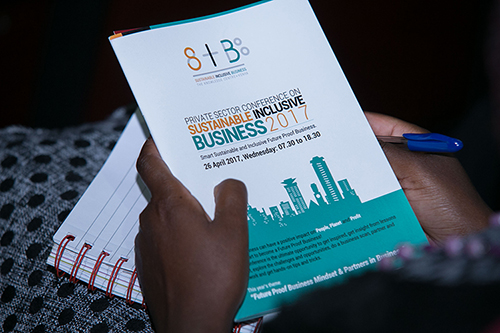
Greening Construction Sector: The opportunity is mainly about realizing Sustainable Local Manufacturing. Why, What and How?
During the 3rd Conference on Sustainable Inclusive business, we discussed ‘greening the construction sector, at length, here are the insights!
Sustainable inclusive business is an imperative in the construction sector to achieve Kenya’s commitments toward COP21 targets, global sustainable development goals (SDGs), Vision 2030 in its current phase of the Medium Term Plan 3 (MTP3) for 2018 to 2022, the Green Economy Strategy Implementation Plan (GESIP), Government’s Big 4 Agenda, and devolution agenda under County Integrated Development Plans (CIDP) and County Spatial Plans.
The building and construction sector is of key importance to the development of Africa and the well-being of its population. Africa can fulfil the demand for a built environment that meets the needs of African people through the application of sustainable building and construction (SBC) concepts. SBC is important for the region and can offer potential to improve the health of people and the environment in surrounding areas as well as reduce the effects of poverty by upgrading unplanned settlements.
To adapt an African maxim, those who adopt sustainable construction practices can shelter themselves from unpredictable consequences of unsustainable building and construction practices. Activities falling within the ‘shelter’ category, specifically the building sector, account for some 40% of overall energy use and associated greenhouse gas emissions, and a majority of material resource use. Accordingly, the sector offers a substantial emissions reduction potential at low or no cost. On this basis sustainable construction should become the rule and not the exception.
The key change areas in new-age construction include innovation, energy-efficiency, circularity, sanitation, waste, local manufacturing!
- Sustainability in Construction Industry (Green Construction Business is the Future, Circular thinking will create major business opportunities, Local green manufacturing & recycling, green procurement)
- Inclusivity in the Construction Industry (Fabricating on site, skill sets to create jobs, non-accredited workforce, foreign construction projects, Government Capacity building to support green construction, affordable housing, manual labour, 3D printing, improving health & safety practices)
- Examples, Opportunities and Good Practices – Orange Climate, Eco Create &Innovate amongst others.
Main challenges in the built environment are poised to be opportunities for SIB through green building practices:
- Future Proof Management skills: Addresses the way a building site and completed building is designed for ease of good management, waste management, building commissioning as well as the development of building user guides. A holistic look at complete building site & environment will give a foresight Indoor Environmental
- Quality: Assess the wellbeing and comfort of building occupants by addressing thermal comfort, pollutants, natural daylight and ventilation. Energy auditing already exists as a profession, however, this represents an enhanced skillset and market offering.
- Energy: Aims to reduce a buildings energy consumption, increase its efficiency and encourage the generation of power from alternative sources. Renewable energy offers the most entrepreneurial opportunity previously reserved for large public sector utilities. We can now construct buildings that generate more energy than that they use, we can control temperatures by the new ability of paint that regulates moisture, heat and cold, we can have air-con ceilings made of water and salt (Orange Climate) and much more. Investments that seem more initially start paying off quickly and long lasting. Once invested in solar – years of energy are free.
- Water: Aims to target reduced use of portable water by encouraging specification of low flow items and the recycling of grey and black water. Scarcity of potable water and mainstreaming of wastewater treatment and rainwater harvesting at the micro grid and individual building level offer entrepreneurial opportunity. Blue economy opportunities abound.
- Materials: Reduce the use of virgin material and encourage the use of materials from sustainable sources. A lot of construction materials are recyclable and also a lot of materials have been made more sustainable and environmental friendly because of latest techniques. Sand, steel, glass, stone (partly) wood are materials that today can be environmentally friendly qualified sourced and are all recyclable and / or reusable. Across the built environment, green certified building materials are an opportunity for manufacturers to create a local green economy. Dig the sand, manufacture glass, sell and use glass, recycle glass, reuse the glass, sell and use the glass etc… local circular economy. The positive impact on environment by reusing, recycling and using smart materials can’t be expressed in money (only).
- Land use & ecology: Increase and protect our natural biodiversity. The built environment is heavily dependent on natural resources for its built environment, and responsible land use & ecology are imperative, and offer green economy opportunities.
- Innovation: Recognize, celebrate and encourage innovation initiatives incorporated into building projects.

